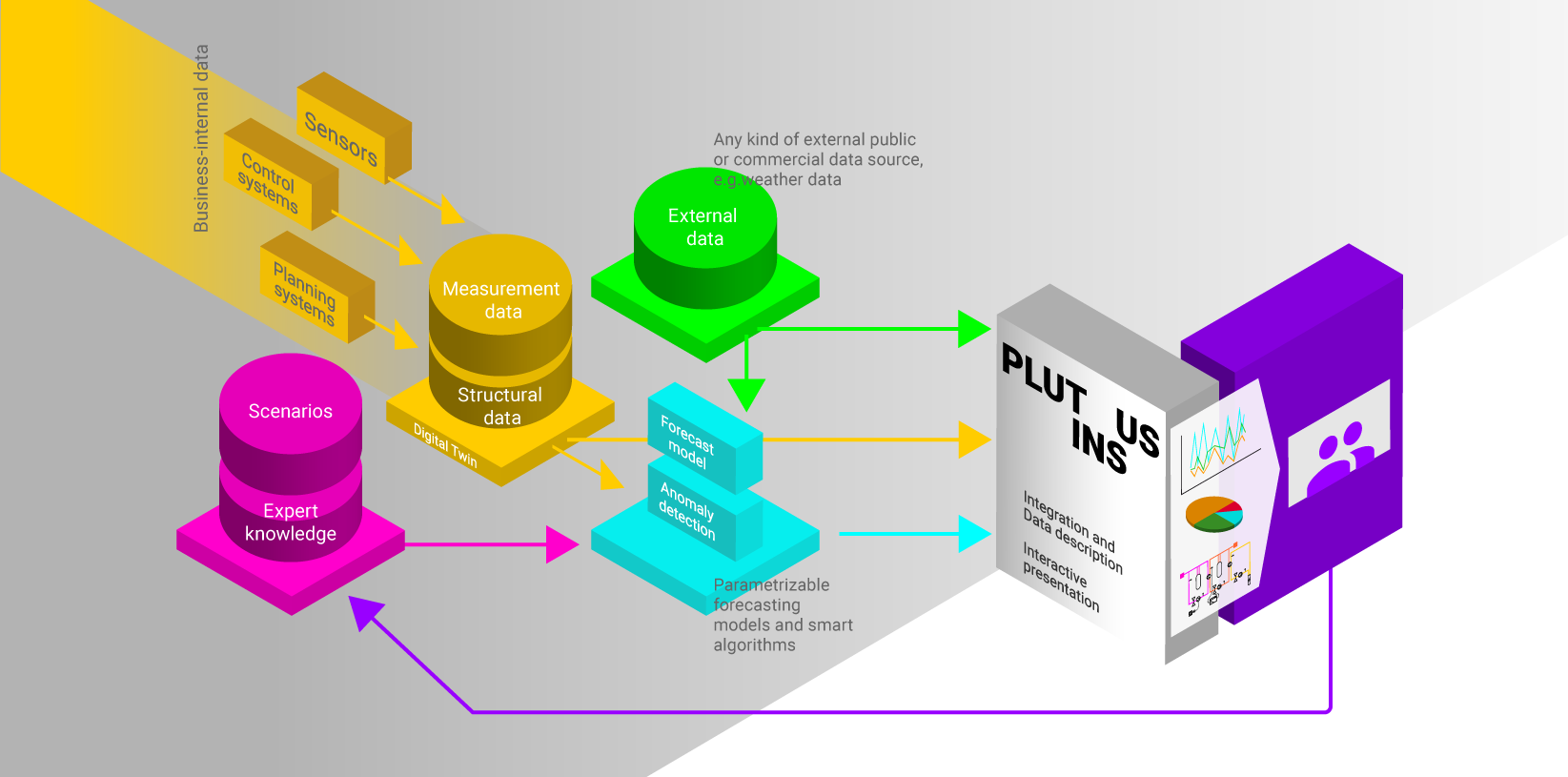Plutinsus creates transparency for complex infrastructures (e. g., multi-energy distribution grids or technical infrastructure in commercial buildings), complex mathematical models (e. g., energy demand models or CO2-equivalence models) and complex business situations (e. g., production processes or financial performance).
Plutinsus is currently targeting the building and the energy sectors, while keeping an eye on the financial and the manufacturing sectors.
Building sector
| Management activities | Happy customers | Successful business | Climate conscious |
|---|---|---|---|
| Operational | Manage service quality (e.g. thermal comfort, air quality, lighting, safety) | Minimize service costs (e.g. reduce unused space, administrative efficiency, component operation) | CO2-efficient heating control, Reduce energy consumption |
| Tactical | New services (e.g. digital administration, smart usage), Accessibility | Optimize service revenues, Customer mix, Supplier selection (e.g. energy contracting), Building 4.0 (e.g. connected suppliers) | Energy consumption/ CO2 emission reduction through retrofitting & own energy production |
| Strategic | Have the right space at the right locations available |
Portfolio management, Investor reporting, New business models | Holistic view: optimize climate impact not only from buildings but also transport, traffic, communication etc. |
Energy sector
| Management activities | Electricity distribution | Electricity retailing | Energy services |
|---|---|---|---|
| Operational | Grid state visualization (plausibility, extrapolation), New terminal planning, Asset maintenance operations, Smart meter management | Day-ahead electricity purchasing, Intra-day load shifting | Operational benchmarking and optimization of individual energy modes and sector coupling |
| Tactical | Asset maintenance planning | Year-ahead electricity purchasing | Energy consumption optimization through data-driven retrofitting & own energy production, Competitive customer offers |
| Strategic | Strategic network planning (Scenario analysis of external and internal demand, supply and risk factors) | Holistic energy offering: optimize climate impact not only from buildings but also transport, traffic, communication etc., New business models | |
Financial sector
Topics include:
- Analysis of investment performance
- Break down portfolio contribution along various dimensions, e. g. markets, sectors, counter-parties.
- Understand performance attribution.
- Provide your own grouping criteria.
- Allow for client self-service.
- Monitoring of credits and their collateralization
- Integrate all data about your client’s assets, credits and collateralization into on system.
- Quickly assess the need for any actions to reduce your credit exposure.
- Evaluate the various possible actions based on a complete and easy-to-understand picture of the situation, including, for instance, circular pledges.
- Understanding of risks arising from environmental, social and governance (ESG) changes
- Understand the impact on your business due to climate change, including society’s actions to fight climate change.
- Evaluate the CO2 emissions that are caused by your own business, your supply chain, and by your customers’ usage of your products and services.
- Simulate various scenarios for actions to reduce CO2 emissions.
- Compare these scenarios and choose the appropriate actions.
Manufacturing sector
Topics include:
- Improved production planning
- Optimization of production processes
- Analysis of production incidents

